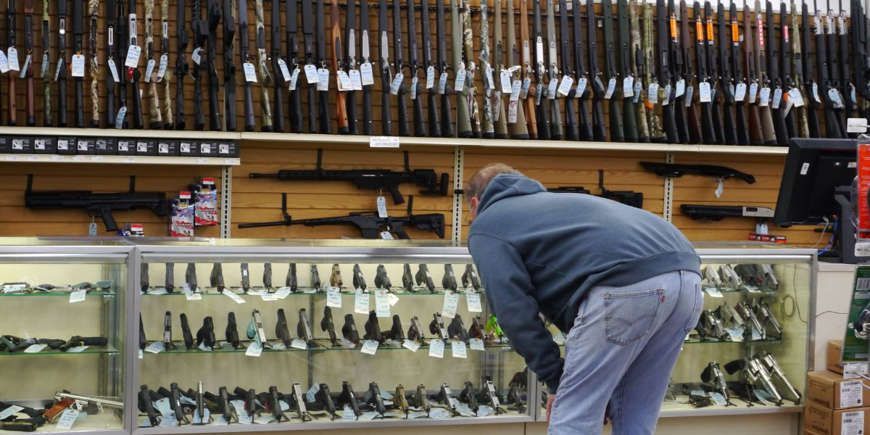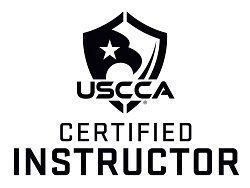Gregory Kielma • June 28, 2024
Let's TalkAbout The use of Deadly Force

Gregg Kielma
USCCA Firearms Instructor
BLOG
“The Use of Deadly Force”
7/1/2024
Says Kielma,” I get asked this all the time, if I have a concealed carry permit and someone threatens me who doesn’t have a weapon, do I have the right to shoot or do I have to warn them first if I feel like I need to defend myself? Will I get in trouble if I shoot without giving a warning? Let’s think about this together. Please remember I’m not an attorney and this in no way is legal advice”.
My credentials: Among others, I am a USCCA Certified Firearms Instructor, Range Safety Officer, USCCA Certified Emergency First Aid Fundamentals Instructor (First Responders), USCCA Certified Marksmanship Simplified: Foundations of Handgun Coaching, USCCA Certified Countering The Mass Shooter Instructor, USCCA Certified Women and Firearms Instructor, USCCA Certified Children and Firearms Instructor, USCCA Certified Home Defense Instructor, USCCA Certified CPR/Defibrillator Instructor, FFL, Gunsmith and a member in good standing with the NRA.
Nothing I say in this answer is an official statement on behalf of any other agency or organization; it is my personal considered opinion.
The question:
“If I have a concealed carry license and someone threatens me but doesn’t have a weapon, do I have the right to shoot or do I have to warn them first if I feel like I need to defend myself. Will I get in trouble if I shoot without giving a warning?”
Answer:
Last Question first: In no US jurisdiction of which I am aware, are you required to give a warning before using deadly force in lawful self-defense. Notice I said, “lawful self-defense”. If the defensive act is lawful, no warning is required. If the act is not lawful, “providing a warning “is irrelevant.
Know the laws of your jurisdiction and the relevant state laws.
General overview.
In no state do mere words, even ugly, nasty, racist, vulgar, threatening, or filthy words constitute “an attack”. You cannot legally exercise self-defense against mere words which are not connected to overt unlawful actions.
LEAVE the area if possible. Avoid-Escape- Defend
Do you have the right to shoot? First, use correct terminology. “Shooting “is the application of Deadly Force using a firearm. Deadly Force can also be hitting someone with a baseball bat. So is cutting them with a knife. It can be throwing a brick at them. It can be striking them with a ball-peen hammer. It can be inflicted with a two-by-four. Deadly Force is that force that can result in Death or Serious Bodily Injury. Deadly Force is Deadly Force, there is no degree to it. Baseball bat Deadly Force is in no way” less” or “nicer” than pistol Deadly Force. Or ball-peen hammer Deadly Force.
So, what if Someone threatens you? Threats are words. You cannot defend yourself against mere words, they are not an “attack” or a crime. Leave the area.
Things are markedly different If they won’t let you leave, - that’s a crime. Things are markedly different if they are committing an actual violent crime against you.
Appropriate Self-Defense Analysis.
You are allowed to use Deadly Force for self-defense when the Ability, Opportunity, Jeopardy, triad is fulfilled, and your actions are Reasonable given the totality of the circumstances.
Ability:
Your attacker has the reasonable ability to inflict Death or Serious Bodily Injury upon you. This may be with a weapon such as a pistol or baseball bat, or even Bare handed- remember even bare-handed blows and kicks can kill. Absence of a weapon does not mean absence of a deadly threat.
Opportunity:
Your attacker can bring a means to inflict Death or Serious Bodily Injury upon you. An example- if he is ten feet away from you and has a baseball bat, he has Opportunity. If he is across a parking lot 300 feet away and has a baseball bat, he does not have Opportunity.
Jeopardy:
Your attacker has indicated by overt action such as pointing a pistol at you or swinging a bat, or words “I’m going to kill you” or other explicit or implied means such as gestures or pointing, that they intend to use Deadly Force upon you, the Defender, or another innocent third party, and the threat is imminent, in other words immediate, happening now. Not next week, not tomorrow but now. If so, you are in jeopardy of Death or Serious Bodily Injury.
Your analysis of the facts and totality of circumstances as they are apparent to you at that time must be reasonable. You must think about whether you are a reasonable person.
Notice this has nothing to do with “feelings”. Relying on “feelings” means “bald fear” or “panic”- these are unreasonable. Your analysis must be the result of clear, logical thinking. It must be reasonable. It must be reasonable when your actions are reviewed by the Grand Jury.
State Statutory Analysis:
In many states, the law specifically states exact, specified circumstances in which you may use Deadly Force. For instance, states that are Legally justified to use Deadly Force to Defend Against and prevent the imminent commission of the violent crimes of: sexual assault, aggravated sexual assault, murder, robbery, aggravated robbery and aggravated kidnapping. Carjacking, home invasion, and business invasion are also included, although the statute does not use those specific terms. Burglary and arson may be defended against with Deadly Force if the use of Deadly Force is “reasonable” under specific circumstances.
As an example of this:
The large man who stops you in the parking lot, balls up his fist and tells you:” Give me your wallet or I’ll smash your face in”. Your statutory analysis: He is committing the violent crime of “robbery”. You may lawfully defend against imminent commission of the crime of robbery with Deadly Force.
Another example:
The large man who stops me in the parking lot, balls up his fist and tells me:” Hey, Jew boy, we don’t allow your kind on our turf. If I catch you here tomorrow, I’ll bash your face in.” The miscreant is rude, vile, bigoted and hateful, but at this instance he is not committing a violent crime. His words may be a criminal offense, namely the making of a “terroristic threat” but his threat of unlawful action against me is not imminent, it is “tomorrow”. There is no lawful response currently under these circumstances involving a gun. I’ll back off, apologize and leave. Then I will call 911 and report the threat.
You must defend yourself lawfully under one analysis or the other as described above. If you cannot justify yourself by one method, at least, you better not shoot, or you will be in a massive mess of trouble.
” I was scared” does not count. “He insulted my Mama”, does not count.
I want to make it double clear that your analysis must be reasonable in the cold light of day as reviewed by the police, the DA and ultimately, by the Grand Jury.
What about fear?
Some people have a hysterical, neurotic, morbid fear of clowns. If someone with such a condition shoots a clown because “I was afraid” the action was not reasonable. For that person, prison will result as well as impoverishing lawsuits.
Know the specifics of your state’s self-defense laws. If you are in doubt, consult a qualified local attorney with expertise in this area of the law.
I trust I have made myself clear.

Gregg Kielma Why many gun owners say local gun shows just aren’t worth the trip anymore Story by Mark Harris/Comment Gregg Kielma For decades, local gun shows were a staple of American firearms culture. They offered a unique blend of history, variety, and community, attracting both seasoned collectors and curious newcomers. However, since 2020, the charm of local gun shows has faded, leaving many enthusiasts feeling disappointed and disillusioned. What was once an exciting event has turned into a frustrating experience, and here’s why. Says Kielma. My business will never attend a GUN Show…EVER. It’s a cutthroat business and a vouge to the bottom of the toilet if you’re a vendor or FFL. It’s just not worth it to be beat up over $5.00 Same thing with “friends”. I’ll write an article on that aspect soon…. Lost a lot of “friends or clients” over $15.00 Here’s the deal, I spend a lot of time with people. We fit them with guns, holsters and what’s needed to be safe in public, only to be sold out for $15.00 after spending hours with them. No more. My time is worth it. I will not be taken advantage of any longer. My RULE: You don’t support my business, I say, good lu ck. Find someone else. We are honest and forthright. I sell firearms at competitive prices; you're paying for my expertise. If you don't like it, please don't waste my time or yours. Buy it someplace place else and shoot someplace else. Let's Take a LOOK A Thrilling Past Before 2020, local gun shows were like treasure troves for firearm enthusiasts. These events felt more like walking through a living museum than a shopping experience. You could find rare collectibles, modern firearms, and sometimes a gem at a price too good to pass up. The community atmosphere, paired with the thrill of discovery, kept people coming back year after year. But those days seem like a distant memory now. The 2020 Turning Point Everything changed when the pandemic hit. Panic buying took over, causing firearm and ammunition prices to skyrocket. The demand outpaced supply, leading to a noticeable depletion of stock at local gun shows. Instead of being a haven for enthusiasts, these events became crowded, anxiety-filled spaces with people scrambling to buy whatever was left. This shift stripped away the joy and excitement that once defined gun shows. Overpriced and Overwhelming Even as the initial panic subsided, local gun shows failed to recover. Today, you’re likely to encounter a limited selection of firearms and ammunition – most of it drastically overpriced. Guns that were once affordable now come with hefty price tags, and ammunition is often sold at rates that make bulk buying unrealistic. It’s not uncommon to leave a gun show empty-handed, wishing you could get your entrance fee back. Fewer Guns, More Random Booths One of the most frustrating developments is the dwindling number of firearm-related booths. Many local gun shows now feature stalls selling items unrelated to firearms, such as siding, windows, or baked goods. While these vendors might have their place elsewhere, their presence detracts from the core purpose of a gun show. When over half the booths are unrelated to firearms, it’s hard not to feel cheated. The Loss of Collectors Gun collectors were once the heart and soul of gun shows, bringing unique, historical, and hard-to-find items. But new federal regulations have made it more challenging for collectors to sell firearms, pushing them out of the market. Without these individuals, the diversity and intrigue of gun shows have diminished, leaving attendees with nothing but the same standard offerings available at big-box retailers. The Decline of Variety Gone are the days when you could stumble upon a rare war rifle or a unique handgun you’d only seen in books. Now, the majority of tables display generic models from big-name brands – Glocks, Smith & Wessons, SIG Sauers—that you can find at any local gun shop. The thrill of discovery has been replaced by a sense of monotony, making the experience feel like a waste of time. The Rise of Big Gun Shows While local gun shows struggle, larger events like the Tulsa Gun Show or the Las Vegas Gun Show still manage to thrive. These mega-shows boast hundreds of tables filled with thousands of firearms, competitive pricing, and a bustling atmosphere. For enthusiasts, these events offer a glimmer of what gun shows used to be, but they are few and far between, requiring significant travel and planning. Ammo Woes Ammunition, a staple purchase for many gun show attendees, has also become a major disappointment. Local gun shows often feature limited options at inflated prices, making it nearly impossible to stock up. High-velocity .22 ammo, once a common find, now feels like a rare commodity, and even basic calibers are sold at prices that make online shopping seem like a bargain. Why Bother? For many gun enthusiasts, the question has become, “Why bother attending local gun shows?” The $10 entrance fee might not break the bank, but the lackluster offerings, high prices, and unrelated booths make it feel like money wasted. The time and effort spent attending could be better used elsewhere, whether it’s visiting a trusted local gun shop or browsing online retailers. A Fading Tradition The decline of local gun shows reflects broader changes in the firearms industry and community. With collectors sidelined and prices remaining high, the once-vibrant tradition of attending a gun show has lost its luster. What used to be a celebration of firearm culture now feels like a hollow shell of its former self. Is There Hope for Revival? Can local gun shows regain their former glory? It’s hard to say. Unless prices stabilize, collectors return, and organizers focus on curating a better experience, the trend is unlikely to reverse. For now, enthusiasts might find more satisfaction in seeking out larger, well-organized shows or supporting local mom-and-pop gun shops. T he Bottom Line Local gun shows once held a special place in the hearts of firearm enthusiasts, but since 2020, they’ve struggled to remain relevant. Overpriced goods, dwindling variety, and the absence of collectors have turned these events into a shadow of their former selves. While there’s still hope for improvement, many find it hard to justify attending in their current state. For now, the golden era of local gun shows seems to be over.

Cape Coral Man Sentenced To Federal Prison For His Role In Firearm Trafficking Conspiracy Monday, November 17, 2025 U.S. Attorney's Office, Middle District of Florida Fort Myers, FL – U.S. District Judge Kyle Dudek has sentenced Derick Desir (28, Cape Coral) to 3 years and 10 months in federal prison for his role in a firearm trafficking conspiracy. Desir pleaded guilty on July 23, 2025, to conspiring to make a false statement to a firearms dealer and making false statements to a firearms dealer. According to court records, in May 2022 Desir joined a conspiracy to “straw purchase” handguns on behalf of others. In June 2022, in coordination with another conspirator, Desir purchased approximately twelve Glock handguns across seven transactions from six different federally licensed firearms dealers in Lee County. While making these firearms purchases, Desir falsely represented to each firearm dealer that he was the “actual buyer or transferee” of the firearms, when he knew that the firearms he was purchasing would be trafficked to Canada by others. At least five of the twelve handguns purchased by Desir during the conspiracy have since been recovered in Canada during various Canadian law enforcement investigations. This case was investigated by the Bureau of Alcohol, Tobacco, Firearms and Explosives and Homeland Security Investigations. It was prosecuted by Assistant United States Attorney Simon Eth. This case is part of Operation Take Back America, a nationwide initiative that marshals the full resources of the Department of Justice to repel the invasion of illegal immigration, achieve the total elimination of cartels and transnational criminal organizations (TCOs), and protect our communities from the perpetrators of violent crime. Operation Take Back America streamlines efforts and resources from the Department’s Organized Crime Drug Enforcement Task Forces (OCDETFs) and Project Safe Neighborhood (PSN). Updated November 17, 2025

HOMESTEAD MAN PLEADS GUILTY TO POSSESSION OF MACHINEGUN BY A CONVICTED FELON Tuesday, November 18, 2025 U.S. Attorney's Office, Northern District of Florida TALLAHASSEE, FLORIDA – Vinson Tavaris Brown, 33, of Homestead, Florida, pleaded guilty in federal court to possession of a firearm by a convicted felon and illegal possession of a machinegun. The plea was announced by John P. Heekin, United States Attorney for the Northern District of Florida. U.S. Attorney Heekin said: “Thanks to the vigilance of our local and federal law enforcement officers, this dangerous felon has been taken off our streets. Protecting our communities from criminals who show a complete disregard for the law remains my office’s top priority, and this successful prosecution is yet another step toward fulfilling the promise made by President Donald J. Trump and Attorney General Pam Bondi to Take Back America from the dangerous felons who prowl our streets.” Court documents reflect that the Tallahassee Police Department stopped a vehicle in which the defendant was a passenger after it made an illegal U-turn leaving Zingales Sports Bar. Three of the occupants of the vehicle complied with officers, but the defendant attempted to reach under his seat and then fled from officers on foot. Law enforcement caught the defendant and detained him, then discovered a firearm equipped with a machinegun conversion device and an extended magazine under the seat that the defendant had been attempting to reach. Brown faces imprisonment for up to 25 years. The case involved an investigation by the Tallahassee Police Department and the Bureau of Alcohol, Tobacco, Firearms, and Explosives. The case is being prosecuted by Assistant United States Attorney James A. McCain. Sentencing is scheduled for December 18, 2025, at 2:00 pm at the United States Courthouse in Tallahassee before United States District Judge Mark E. Walker This case is part of Operation Take Back America a nationwide initiative that marshals the full resources of the Department of Justice to repel the invasion of illegal immigration, achieve the total elimination of cartels and transnational criminal organizations (TCOs), and protect our communities from the perpetrators of violent crime. As part of its PSN strategy, the United States Attorney’s Office is encouraging everyone to lock their car doors, particularly at night. Burglaries from unlocked automobiles are a significant source of guns for criminals in the Northern District of Florida. Please do your part and protect yourself by locking your car doors. The United States Attorney’s Office for the Northern District of Florida is one of 94 offices that serve as the nation’s principal litigators under the direction of the Attorney General. To access public court documents online, please visit the U.S. District Court for the Northern District of Florida website. For more information about the United States Attorney’s Office, Northern District of Florida, visit http://www.justice.gov/usao/fln/index.html. Contact United States Attorney’s Office Northern District of Florida USAFLN.Press.Office@usdoj.gov X: @USAO_NDFL Updated November 18, 2025

GAINESVILLE MAN SENTENCED TO FEDERAL PRISON FOR POSSESSION OF A MACHINEGUN Friday, November 21, 2025 U.S. Attorney's Office, Northern District of Florida GAINESVILLE, FLORIDA – Jaquan Tyrell Calhoun, 21, of Gainesville, Florida, was sentenced in federal court to 5 years and 10 months imprisonment for possession of a machinegun. The sentence was announced by John P. Heekin, United States Attorney for the Northern District of Florida. U.S. Attorney Heekin said: “With yet another successful prosecution, my office continues to deliver on the promise made by President Donald J. Trump and Attorney General Pam Bondi to Take Back America from the violent criminals who have threatened the safety of our communities for far too long. I deeply appreciate the excellent investigative work by our state and federal law enforcement partners to identify and remove this offender from the streets, and my office will continue to aggressively prosecute these crimes with the full force of our federal laws.” Court records reflect that Calhoun, who is a member of a gang, would routinely post images and videos of himself with firearms on social media, including multiple videos of himself shooting machineguns. On April 21, 2024, Calhoun and codefendant Lagarius Johnson live-streamed a video of themselves posing with cash and firearms. Calhoun is seen on video flashing a Glock pistol that had been modified with a machinegun conversion device. Johnson was arrested later that night carrying that same illegally modified Glock pistol which was confirmed to be a machinegun. “Calhoun’s decision to flaunt a machine gun on social media highlighted the recklessness that endangers our communities,” said FBI Jacksonville Special Agent in Charge Jason Carley. “This sentencing demonstrates our commitment to working side by side with our federal and local partners to stop violent and organized criminal activity in our communities.” “The Alachua County Sheriff’s Office remains steadfast in our commitment to combat gun violence in our community by working closely with our state and federal partners to locate and apprehend criminals like Jaquan Calhoun — individuals who have no business possessing a firearm, let alone one illegally modified into a deadly automatic weapon,” stated Sheriff Chad Scott, Alachua County Sheriff’s Office. The case involved an investigation by the Federal Bureau of Investigation’s Safe Streets Task Force and the Alachua County Sheriff’s Office, with assistance from the Bureau of Alcohol, Tobacco, Firearms, and Explosives, the Drug Enforcement Administration, and the Gainesville Police Department. Assistant United States Attorneys James A. McCain and Eric W. Welch prosecuted the case. This case is part of Operation Take Back America a nationwide initiative that marshals the full resources of the Department of Justice to repel the invasion of illegal immigration, achieve the total elimination of cartels and transnational criminal organizations (TCOs), and protect our communities from the perpetrators of violent crime. The United States Attorney’s Office for the Northern District of Florida is one of 94 offices that serve as the nation’s principal litigators under the direction of the Attorney General. To access public court documents online, please visit the U.S. District Court for the Northern District of Florida website. For more information about the United States Attorney’s Office, Northern District of Florida, visit http://www.justice.gov/usao/fln/index.html. Contact United States Attorney’s Office Northern District of Florida USAFLN.Press.Office@usdoj.gov X: @USAO_NDFL

Are the new "V models" from Glock actually safer, or is this just a strategy to satisfy government regulations? Says Gregg Kielma, as I understand it, the “V” model is a change to the trigger bar, which no longer allows the “Glock Switch” to turn a Glock into a machine pistol. It’s not a “safety” issue as much as it is a “illegal action” limitation attempt. It’s a response in general to “governmental unease” about the “Glock Switch” and in particular to California banning sales of guns with “Glock style” trigger bars which the device can use to give a “full auto” action.

If I legally open carry a firearm and someone is robbing a store I'm in, can I draw the weapon if the robber has a knife? If no shots are fired, is this legal? Note: You do not have an obligation to interfere, nor do you have a clear right to do so. As much as I would applaud your sentiment, the legality of the situation depends on where you live (or where the store is located). The basic rule for all gun owners is that you cannot use lethal force unless you are in imminent danger. Preventing an armed robbery by intimidation is probably inside the law. Shooting the guy or even discharging your weapon is very murky in many jurisdictions. The idea of a proportionate response is the question. Send a signal. Clearly armed and ready to interfere may be enough. I doubt that a knife-wielding miscreant wants to take you on. No draw. No point. No shot. No blood. No law enforcement. No lawyer. No charges. No problem Statistics suggest that 90% of all possible encounters end as soon as a defensive weapon of any kind is shown. It is difficult to be detached, unbiased, and objective in this atmosphere. Most gun owners agree that the gun at hand when needed is far better than not having one when the need arises. The chances of individual citizens getting into a lengthy gun battle in self-defense situations are incredibly small in any case. It has been shown that two shots usually resolve the issue one way or another.

How Much Is To MUCH I hold a longstanding perspective on this matter, which is as follows: Every home in America should have 5 firearms: • A handgun • A shotgun • An AR style rifle (meaning semi-automatic intermediate round) • A battle rifle (full size round, think .308/7.62x51 NATO or some such) • A .22LR, either handgun or rifle In handgun, auto, revolver, whatever you can handle. I have 5 handguns of various types and calibers. Good for close in work, concealed, and daily carry. Shotgun, autoloader or pump, minimum 5 round mag (4+1), keep bird, 00 buck, and slugs handy. Do not mix loads. Double or triple magazines may be an exception to that. I have KSG that has 2 magazines and I keep 2 different types of loads in it, one load in one mag, a different one in the other. AR style. This is always a barrel of monkeys. Okay, so AR-15, probably at the top of many people’s lists and deservedly so. AK-47, also on many people’s lists and deservedly so. But, SKS, AK-74, Kel-Tec (argue with me on another thread), FN, PTR, there are OPTIONS, LOTS of options. Find the one that works for you. For the record, there’s a reason why AR-15 and AK-47 are so high on this list. Battle rifle. These can be tricky. MANY battle rifles are chambered in .308/7.62x51 NATO. Mine is a PTR-102, an American built copy of an HK-91 (G3). M-14, or M1A, is another. FN-FAL if you can find one. M1 Garand if you can find one and feed it. Recently, there have been a plethora of AR-10 type and more modern battle rifles, St. Victor, SFAR, SCAR and the like. I would also remind folks that until the advent of the M1 Garand, the standard battle rifle was a bolt action 5 shot rifle. I have two, a Mosin-Nagant 91–30 and a 1903 Springfield. Mausers, Enfields, even Arisakas and Carcanos all fall into that. Now, 22LR. As a self-defense round, it leaves a bit to be desired. However, as a useful round, it’d be hard to find one so hard working. Plinking, training, varmints, pest control, small game. The little .22LR’s biggest problem is that it’s so dangerous because people don’t realize how dangerous it can really be. However cute and tiny it may look, it is STILL a firearm. I have four of the little buggers and everyone is a kick to shoot AND cheap to feed. I didn’t use to put it in my 4-gun minimum, but its sheer utility, inexpensiveness, and ubiquity demanded otherwise. My 5-gun minimum covers just about anything up to the largest game in North America. Hunting, self-defense, personal defense, pest control, all of that can be covered. With those five weapons you probably have almost everything you’d want or need to do involving a firearm. With all of this, don’t forget your logistics train. How many calibers do you have, how many do you need, how much do you expect to feed them. I currently have four calibers of pistol, one size of shotgun, two intermediate calibers, and five rifle calibers. It’s a LOT of ammo to keep these things fed. It’s a good question This is just my opinion.

For a sidearm carry, would you prefer a .45 ACP or a 9mm and why? Gregg Kielma I grew up preferring the 9mm. It is a good self-defensive round. Stopping a person has very little to do with what you stop the threat with; it has everything to do with where you hit them. If a .45 round would stop them, a 9mm hit to the same location would stop them as well. A shot from either in a non-vital location may not stop a person who is determined, on drugs and or adrenaline. People often take rifle rounds and pistol rounds and keep moving. Always shoot center mass, when that doesn’t work shoot pelvic girdle and last shoot for the head. We need to stop the threat. Hitting a vital body part is important and practice is important to avoid multiple rounds being fired. The 9mm has higher capacity (usually 2x), faster and more accurate follow up shots, is cheaper to train with, and has more than enough energy and penetration to reach vitals organs from poor angles. I like my .45 but I believe 9mm to be the best cartridge for self-defense. It’s what I carry and have carried for 35 plus years. When I lived in Nebraska, I preferred the .357 because I didn’t know better. It was a good gun to shoot, stopped just about anything I came across, and I liked it before the semi-auto’s were available to purchase. Like I said I didn’t know better. Here in FL 9mm is king and will stop just about anything. I truly wouldn't feel bad carrying any of the cartridges I mentioned. They are all very good at what they do, and more than sufficient for predators of the two-legged variety.

Can I be fired for merely holding a concealed carry permit? Gregg Kielma Say's Gregg Kielma FFL, Firearms Instructor, Gunsmith, First Aid Fundamentals Instructor and ERT Captain . This is a very good question. I get asked this every once in a while, during my firearms training classes. Let's take a look and talk more about this subject. My advice is keep your business private from all employers and coworkers. Let's Take a LOOK: I assume this stems from the 2018 news that a social worker in Roanoke , Virginia claimed she was fired for simply having the permit. It appears she was a city employee. I would suggest that if you are fired for merely holding a legal concealed carry permit or license, you have the grounds for an enormous civil rights lawsuit. I assume you are really discussing just getting the permit. Any private employer can fire you for carrying on their property- it’s theirs and they get to set the rules, including prohibiting lawful concealed carry by their employees. There is no doubt about that. If you are really asking about you just getting the permit? The right to arms is a “fundamental civil right” according to the US Supreme Court. Simply acquiring a permit so you can carry legally in your jurisdiction is none of your employers business and they cannot sanction you for the action. Acquiring a carry permit might be reasonably compared to a person registering to vote. Could your employer fire you for registering to vote? How about for you actually voting? How about firing you for you going to church on your own time, even if your employer doesn’t like that church? I don’t think you will find a court which would let your employer fire you for simply getting a permit. As I said- civil rights lawsuit. If the fired person was really a public employee and the story is actually as reported, the City of Roanoke was certainly in danger of legal action.

October Gun Sales Surpass 1.3 Million, NSSF Reports Mark Chesnut - After slow sales in July ended the nearly six-year-long streak of firearms sales above 1 million, that sub-1 million figure only lasted for a month. Based on recent sales information, the new 1 million-plus streak has now reached three months. The National Shooting Sports Foundation-adjusted National Instant Criminal Background Check System (NICS) figure for October was 1,299,312, up from the September total of 1,091,342. That number marks a slight decrease of 0.3 percent compared to the October 2024 NSSF-adjusted NICS figure of 1,302,857. For comparison, the unadjusted October 2025 FBI NICS figure of 2,289,774 reflects a 0.4 percent decrease from the unadjusted FBI NICS figure of 2,298,383 in October 2024. The adjusted NICS data were derived by subtracting out NICS purpose code permit checks and permit rechecks used by states for CCW permit application checks as well as checks on active CCW permit databases. NSSF started subtracting permit rechecks in February 2016. Mark Oliva, NSSF managing director of public affairs, called the October numbers “encouraging,” as they indicate many are still very interested in acquiring firearms.















